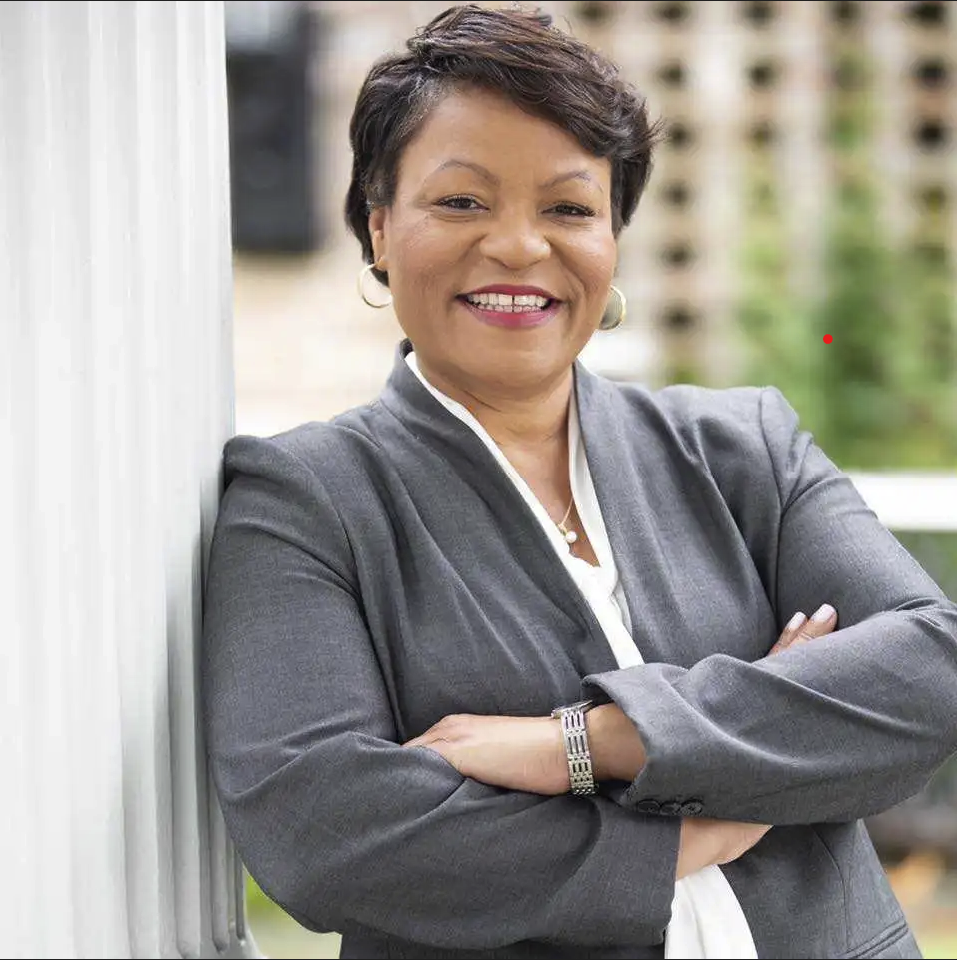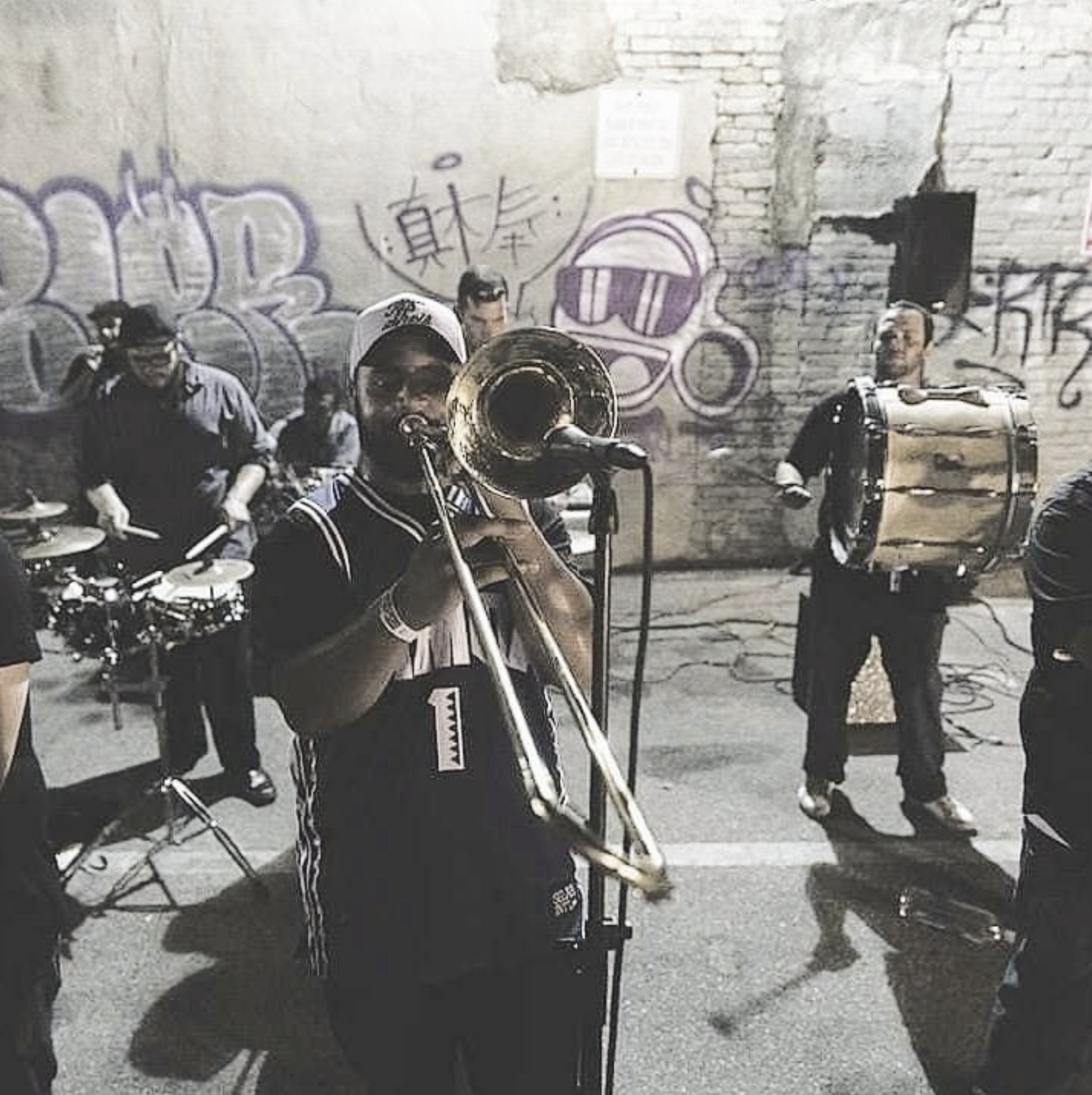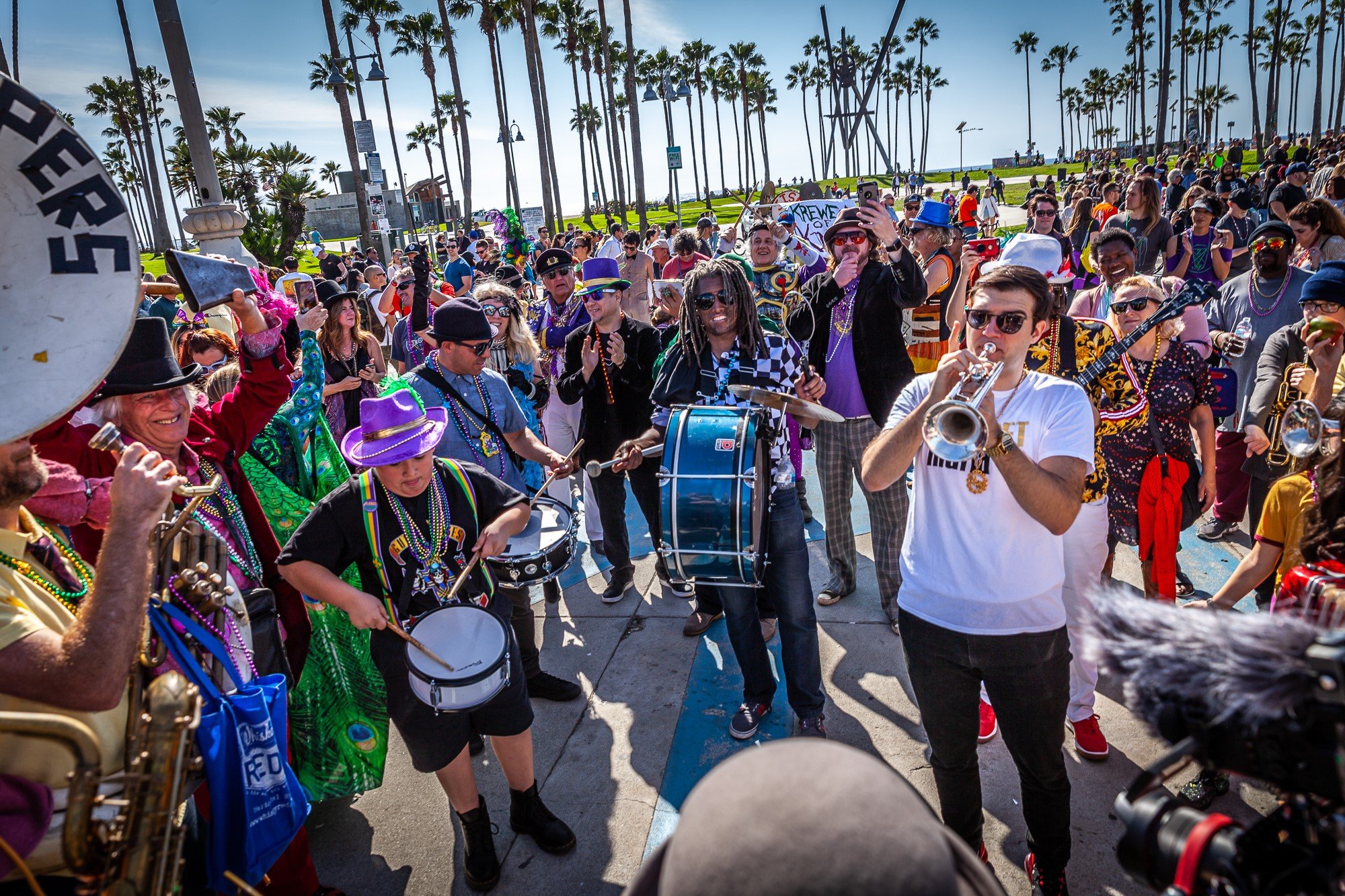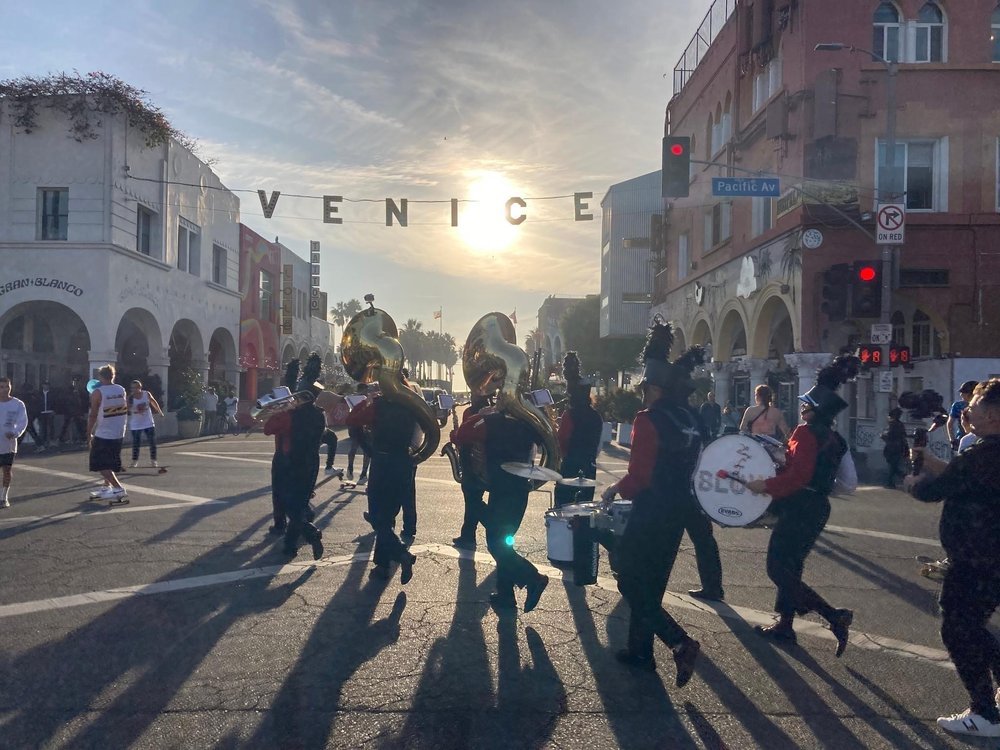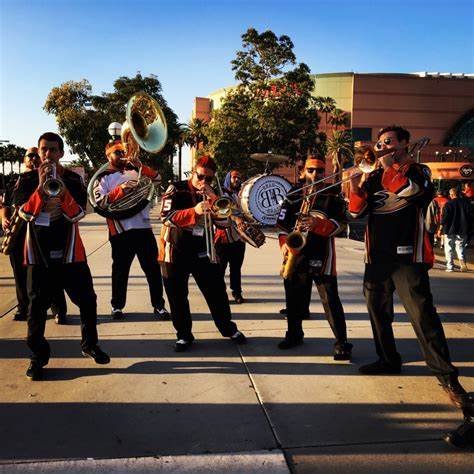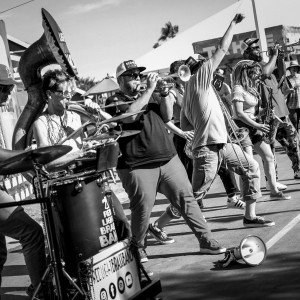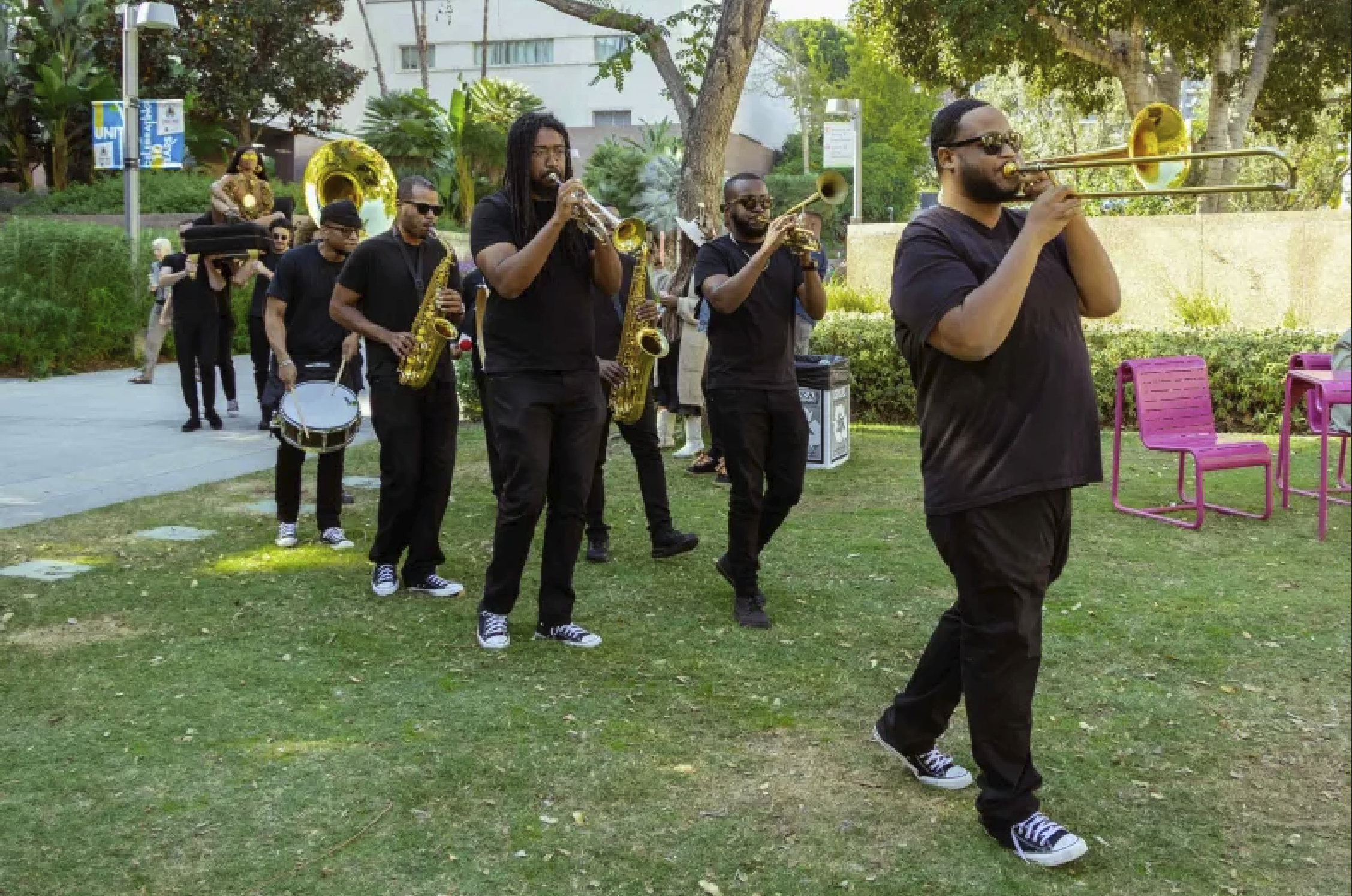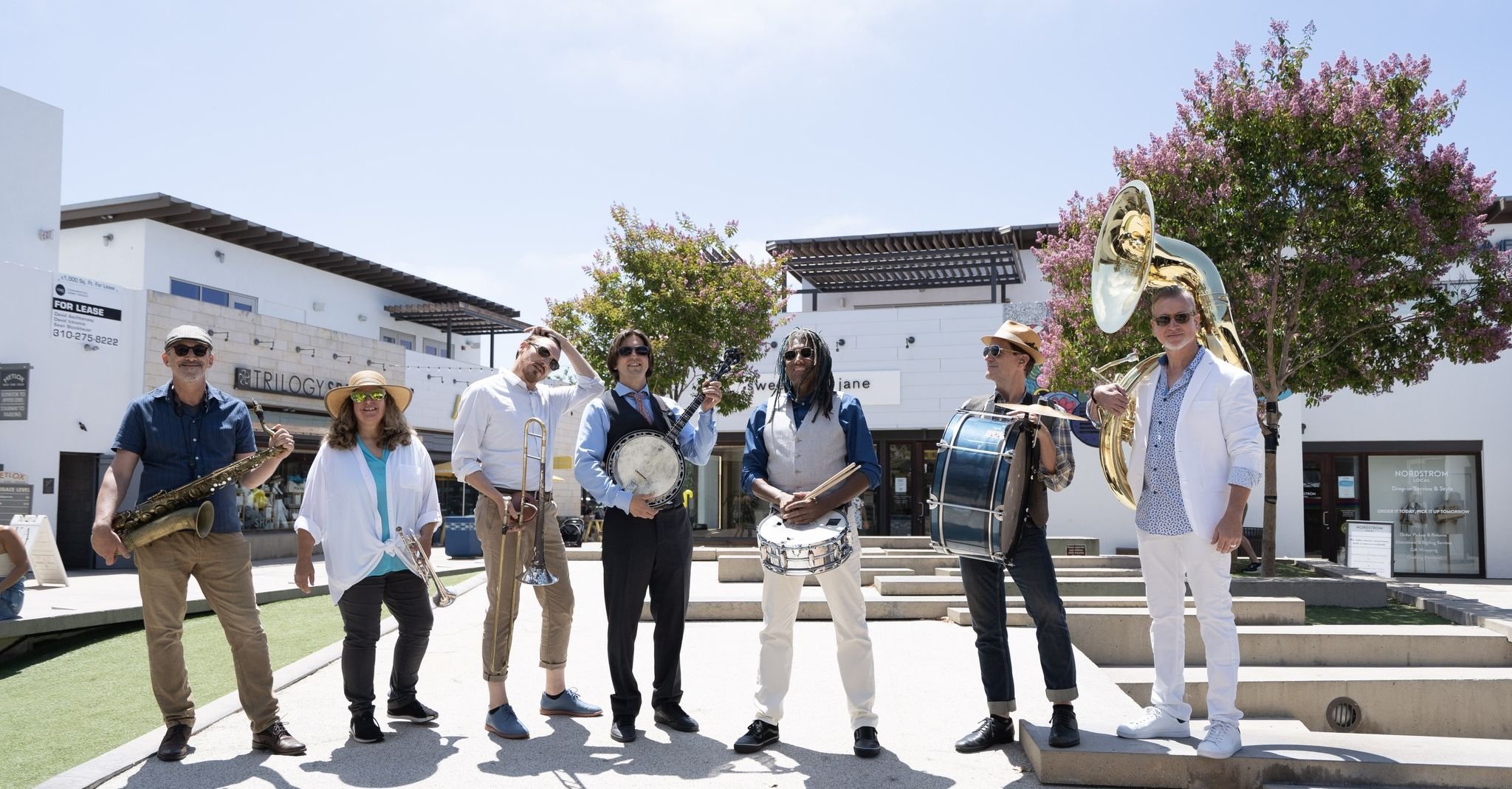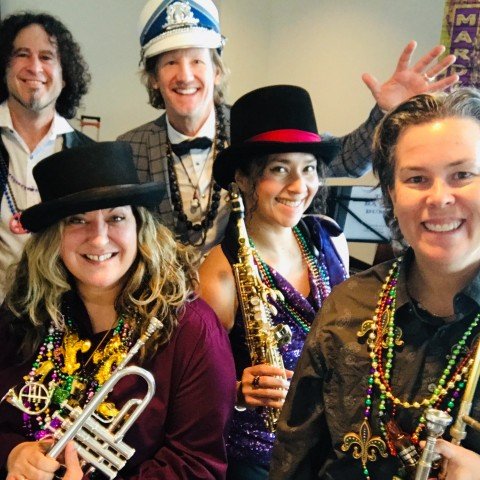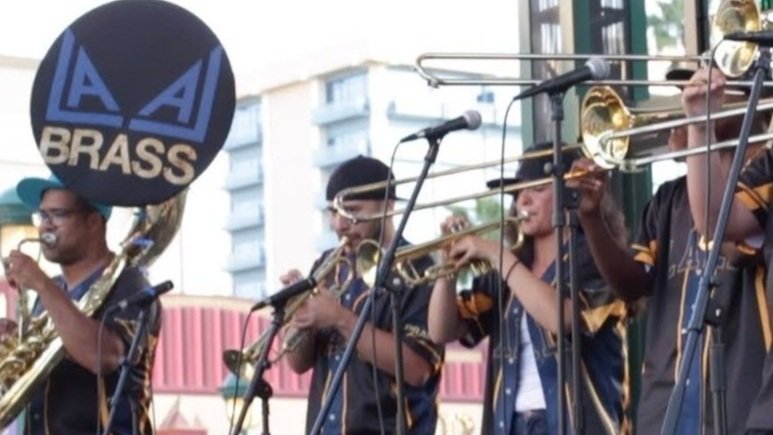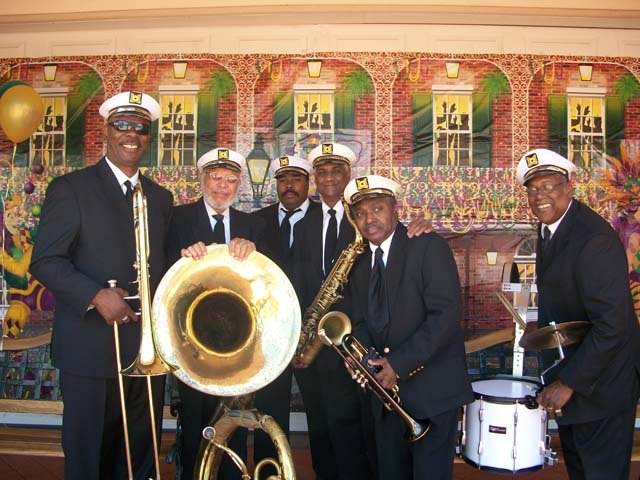Celebrating New Orleans Culture in Los Angeles: The New Orleans Corridor
A second line led by the New Groove Brass Band along the newly christened New Orleans Corridor, a roughly 1-mile stretch of Jefferson Boulevard in South Los Angeles. Photo credit, Jason Armond of the Los Angeles Times. https://www.latimes.com/california/story/2023-06-19/juneteenth-los-angeles-new-orleans-corridor-black-history.
By Marc T. Gaspard Bolin
Friday, June 16, 2023
Today, I am excited to share the news of the dedication and ribbon-cutting ceremony for the newly named "New Orleans Corridor." This corridor serves as a testament to the historical migration and enduring legacy of Creole and African American communities who found a new home in Los Angeles during a challenging period in the South.
The Dedication and Ribbon-Cutting Ceremony: On Saturday, June 17, at 11 a.m., Los Angeles City Mayor Karen Bass and Council member Heather Hutt, alongside a delegation led by New Orleans Mayor and Los Angeles Native LaToya Cantrell and the Los Angeles Jazz Festival Foundation, will host a momentous event to honor the newly named New Orleans Corridor. This corridor stretches from Holy Name of Jesus Catholic Church, located at 1977 West Jefferson Blvd., to Harold & Belles Creole Restaurant at 2920 West Jefferson Blvd.
With its rich history and vibrant cultural traditions, New Orleans has long been celebrated as a melting pot of diverse influences. The city's unique cultural tapestry has captivated the world, from the soul-stirring sounds of brass bands to the infectious energy of second line parades. But what happened when this vibrant culture found its way to the streets of Los Angeles? In this blog post, we delve into the fascinating journey of New Orleans culture in the City of Angels, exploring the immigration from NOLA, the infectious rhythms of brass bands, and the spirit of second line culture.
A Historical Migration
The allure of Los Angeles has drawn people from all walks of life, including those seeking new opportunities and a fresh start. Over the years, many individuals from New Orleans have made their way to the West Coast, bringing with them a piece of their beloved city's culture. This migration has enriched the cultural fabric of Los Angeles and created a sense of community and connection for those who yearn for a taste of home.
The migration from New Orleans to Los Angeles has enriched the cultural landscape in various ways, such as bringing the profound expressions of New Orleans through brass bands and the second line, creating a vibrant NOLA-style and custom affiliated with Mardi Gras street parades, jazz weddings, and funerals, and contributing to the diverse and dynamic cultural fabric of the city.
During the first phase of the Great Migration (1910-1930), thousands of African Americans left the South to escape limited economic opportunities and oppressive social conditions, including segregation and racial violence. This led to a significant increase in the Black population of major Northern cities like Chicago, New York, Detroit, and Philadelphia. Black Louisianans also migrated to the western regions of the United States. The second phase of the Great Migration (1940-1970) saw more migrants heading to Western destinations.
During World War II, LA's defense industry saw a significant production increase. This led to a growing number of African Americans from the South moving to LA in search of job opportunities in the automobile, rubber, and steel sectors. As a result, LA became a major destination for Black migrants during this second wave of migration from the South.
Louisianans were the second-largest group of Black southern migrants in Los Angeles during this time. They settled near Central Avenue, which became the heart of the African American community from around 1920 to 1955. This area was bustling with streets, shops, theaters, and clubs essential to everyday African American life.
Central Avenue played a significant role in shaping the development of rhythm and blues, mass gospel choirs, and jazz. It was home to several thriving jazz clubs, including the Apex Club, Casablanca, Club Alabam, Downbeat, Flame, Jack's Basket (famous for all-day jam sessions), The Last Word, Lincoln Theatre, Lovejoy's, the Plantation, and Ivie Anderson's Chicken Shack. Another club called The New Orleans, located on Century Blvd., also contributed to the growing jazz scene.
There are numerous restaurants in LA dedicated to New Orleans food culture. Among them is The Little Jewel of New Orleans in Chinatown, which offers a range of Cajun and Creole dishes, including gumbo, jambalaya, and red beans and rice. Preux & Proper in downtown Los Angeles also provides a Southern-inspired menu with gumbo and fried chicken. At the same time, The Gumbo Pot at the Original Farmers Market serves up various Cajun and Creole dishes, including gumbo, jambalaya, and crawfish étouffée. And probably the most well-known is Harold and Belle's—the Westernmost boundary of the New Orleans Corridor.
Harold and Belle's is a family-owned and operated restaurant in the Jefferson Park district of South Los Angeles that serves genuine New Orleans cuisine. The restaurant was opened by Harold and Mary Belle Legaux in 1969. Since then, the family has run the restaurant, with Harold Jr. and his wife Denise changing the decor and expanding the menu. Currently, the restaurant is run by Ryan and Jessica Legaux, Harold's grandson and granddaughter-in-law. The restaurant's loyal dedication to the community has not changed since its founding, and it offers an authentic New Orleans-style meal, including Creole favorites and po'boys. The dessert menu includes beignets.
The New Orleans Corridor pays homage to the men, women, and families of Creole and African American descent who courageously relocated from Louisiana to Los Angeles during a tumultuous period in the South. Since the early 20th century, LA has been a prominent destination for Black migrants from the South, including New Orleans. This migration brought the vibrant culture and traditions that have become synonymous with the city of New Orleans. What's more, the infusion of NOLA culture has added new dimensions and diversity to LA's artistic and musical scene.
Brass Bands and Second Line Culture
One cannot truly understand the essence of New Orleans culture without experiencing the joyous celebration of second line parades. Rooted in African and Caribbean traditions, these lively processions bring together musicians, dancers, and revelers in a spirited display of community and resilience. The second line, a profound expression of New Orleans, has become a signifier of NOLA-style and customs in LA. From Mardi Gras street parades to jazz weddings and funerals, the second line has become a cherished part of the city's cultural fabric. And at the heart of it, all are brass bands, which have become synonymous with the spirit of NOLA. With their trumpets, trombones, saxophones, and drums, brass bands not only provide the music soundtrack for the parade but also fuel nearly every aspect of it, pushing the tradition forward and across boundaries. These parades not only provide a platform for artistic expression but also serve as a powerful means of critiquing racial violence and reflecting the unique environment of LA.
In Los Angeles, second line culture has found a home, with dedicated affinity groups and groups of dancers and musicians coming together to honor this cherished tradition. In the 1950s, middle-class African Americans left the area, taking businesses, churches, clubs, and community institutions with them. This led to a decline in social support for Black Angelenos. Unlike in New Orleans, there were no mutual aid societies for them to rely on for support. In NOLA, the Black community found support and safety from violence in church and mutual aid organizations since the 1780s. Mutual aid societies provided members with medical access, pensions, insurance, and burial arrangements. They also organized social activities like music, dance, picnics, baseball games, and parades. By the 1880s, some Black Orleanians shifted their focus to social clubs, creating social aid and pleasure clubs (SAPCs) to organize events like dances, balls, and parades.
In the early 1960s, LSU alums established the Louisiana State University Alumni Association of Southern California (LSUAA of SoCal) in Los Angeles. This group aimed to celebrate their shared culture, raise funds for LSU scholarships, and organize social events like LSU football game watch parties. Later on, Louisiana migrants began organizing cultural celebrations, including the Long Beach Mardi Gras Parade (1977), the Long Beach Bayou Festival (1986), LSUAA of SoCal's annual Crawfish Boil (1988), the Simi Valley Cajun & Blues Festival (1989), and the Long Beach Crawfish Festival (1994). In 1988, a new charitable and social organization called the Louisiana to Los Angeles Organization (LALA) was formed. Its main goals were to raise money for education and support Louisiana culture. And, you guessed it, LA-area brass bands are central to every event these SAPCs hold.
Starting in 2002, the Krewe of Grandview has been hosting a Mardi Gras celebration in Venice Beach, California, projecting an image of NOLA with its King and Queen, colorful pageantry, lively music, and beads. Miss Jessica Long founded KoG as a way to honor the Louisiana roots of her partner Johann Stein and connect with the community in a meaningful way. Thousands of people, both native New Orleanians and non-native alike, identify with this celebration and celebrate Mardi Gras on the Venice Boardwalk each year.
Today, over a dozen brass bands thrive in the LA area: Bayou Bump, Bear Brass, Beaucoup Brass Band (formerly known as the Mudbug Brass Band), Blackfist Brass Band, Blow Brass, Brass Monkey Brass Band, California Feetwarmers, Critical Brass, the Hollywood High Steppers, the Hornets, LALA Brass, the Louisiana Street Steppers, the New Orleans Traditional Brass Band, Red Light Brass Band, Sazerac Steppers Brass Band, Sea Funk Brass Band, Tin & Copper Brass Band, and the Top Shelf Brass Band, and probably some I've neglected to mention here.
Here, the echoes of NOLA brass bands can be heard as talented musicians continue to carry the torch, captivating the hearts of both NOLA migrants and the local community and infusing the city with their dynamic performances. Whether it's in local jazz clubs, community events, or even impromptu street performances, the resonance of brass bands serves as a testament to the enduring power of New Orleans culture.
Preserving Tradition and Celebrating Culture
The dedication and ribbon-cutting ceremony for the New Orleans Corridor marks a significant milestone in celebrating the enduring legacy of New Orleans culture in Los Angeles. The contemporary expressions of the second line in these two diverse urban landscapes (New Orleans and Los Angeles), we witness the power of music and tradition in shaping identities and fostering a sense of community. The New Orleans Corridor stands as a testament to the resilience and creativity of the NOLA diaspora, ensuring that the spirit of New Orleans continues to thrive in the heart of Los Angeles.
________________________________________________________________________
INFORMATION: Ribbon Cutting Ceremony and Second Line
On Saturday, June 17, at 11 a.m., Los Angeles City Councilmember Heather Hutt along with Mayor Karen Bass and a delegation led by New Orleans Mayor LaToya Cantrell and the Los Angeles Jazz Festival Foundation will host the dedication and ribbon-cutting ceremony for the newly named, “New Orleans Corridor.”
Ribbon Cutting Ceremony in front of Holy Name of Jesus Catholic Church. Following the ceremony will be a 2nd line to our concert stage in front of Harold & Belle's Stage!
SCHEDULE OF EVENTS:
9:00 am Keep it Run Hundred Juneteenth Run / Walk (Registrations Link & Details Below)
11:00 am Ribbon Cutting Ceremony
12:00pm 2nd Line Parade To Harold & Belles
12:30pm Main Stage Concert, 2920 W. Jefferson Blvd, Los Angeles, CA 90018
PERFORMANCES BY:
IRVIN MAYFIELD
DJ PZB
TERRACE MARTIN & FRIENDS
1500 OR NOTHIN
FOR TICKETS: https://www.eventbrite.com/e/new-orleans-corridor-ribbon-cutting-street-festival-tickets-637890657127

